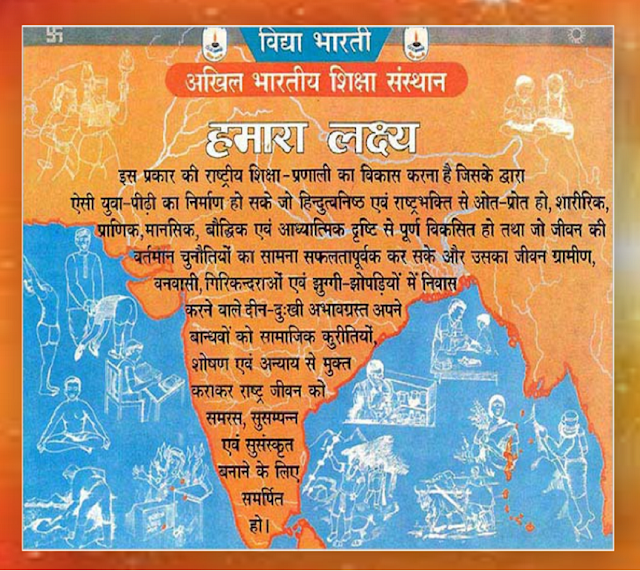भारत में सामान्यता प्राथमिक विद्यालयों में ६ वर्ष की आयु पूर्ण होने पर बालक कक्षा प्रथम में प्रवेश लेकर अपने औपचारिक शिक्षा आरम्भ करता है. 3 वर्ष से 6 वर्ष का उसका समय प्रायः परिवार में ही व्यतीत होता है. प्राचीन काल में भारत में जब परिवार संस्था सांस्कृतिक दृष्टि से सशक्त थी उस समय बालक परिवार के स्नेहपूर्ण वातावरण में रहकर योग्य संस्कार ग्रहण कर विकास करता था. माता ही उसकी प्रथम शिक्षिका होती थी. किन्तु आधुनिक काल में औद्योगिक विकास एवं पश्चिमी सभ्यता का प्रभाव विशेष रूप से नगरों में, परिवारों पर भी हुआ और इसके परिणामस्वरूप 2 वर्ष का होते ही बालक को स्कूल भेजने की आवश्यकता अनुभव होने लगी. नगरों में इस आयु वर्ग के बच्चों के लिए "मोंटेसरी", "किंडरगार्टन" या नर्सरी स्कूलों के नाम पर विद्यालयों की संख्या बढ़ने लगी. नगरों एवं महानगरों के गली-गली में ये विद्यालय खुल गए और संचालकों के लिए व्यवसाय के रूप में अच्छे धनार्जन करने के साधन बन गए |
मोंटेसरी या किंडरगार्टन के नाम पर चलने वाले इन विद्यालयों में कोमल शिशुओं पर शिक्षा की दृष्टि से घोर अत्याचार होता है. भारी-भारी बस्तों के बोझ ने इनके बचपन को उनसे छीन लिया. अंग्रेजी माध्यम के नाम पर पश्चिमीकरण की प्रक्रिया तीव्र गति से चल रही है. देश के लिए घातक इस परिस्थिति को देखकर विद्या भारती ने पूर्व प्राथमिक शिक्षा की ओर विशेष रूप से ध्यान केन्द्रित किया. भारतीय संस्कृति एवं स्वदेशी परिवेश के अनुरूप शिशु शिक्षा पद्धति "शिशु वाटिका" का विकास किया. शिशु का शारीरिक, मानसिक, भावात्मक, सामाजिक एवं आध्यात्मिक विकास की अनौपचारिक शिक्षा पद्धति "शिशु वाटिका" के नाम से प्रचलित हुई. अक्षर ज्ञान और अंक ज्ञान के लिए पुस्तकों और कापियों के बोझ से शिशु को मुक्ति प्रदान की गयी |
खेल, गीत, कथा कथन, इन्द्रिय विकास, भाषा-कौशल, विज्ञान अनुभव,रचनात्मक-कार्य, मुक्त व्यवसाय, चित्रकला-हस्तकला, दैनन्दिन जीवन व्यवहार आदि के अनौपचारिक कार्यकलापों के माध्यम से "शिशु वाटिका" कक्षाएँ शिशुओं की आनंद भरी किलकारियों से गूंजती हैं और शिशु सहज भाव से शिक्षा और संस्कार प्राप्त कर विकास करते हैं |
In India, generally, after completing 6 years of age, a child starts his formal education by taking admission in class I in primary schools. His time from 3 to 6 years is mostly spent in the family. In ancient times in India, when the family institution was culturally strong, the child used to develop by living in the loving environment of the family and acquiring good values. Mother was his first teacher. But in modern times, industrial development and western civilization, especially in cities, had an impact on families as well and as a result, the need to send a child to school as soon as he turns 2 years of age is felt. In cities, the number of schools for children of this age group in the name of "Montessori", "Kindergarten" or nursery schools started increasing. These schools opened in every nook and corner of the cities and metros and became a means for the operators to earn good money as a business.
In these schools running in the name of Montessori or Kindergarten, tender children are subjected to severe torture in terms of education. The burden of heavy bags took away their childhood. The process of westernization is going on at a rapid pace in the name of English medium. Seeing this fatal situation for the country, Vidya Bharti focused especially on pre-primary education. Developed child education system "Shishu Vatika" according to Indian culture and indigenous environment. The informal education system of child's physical, mental, emotional, social and spiritual development became popular in the name of "Shishu Vatika". The child was freed from the burden of books and notebooks for knowledge of letters and numbers.
Through informal activities like games, songs, story telling, sensory development, language skills, science experience, creative work, free trade, painting-crafts, daily life behavior etc., “Shishu Vatika” classes echo with the joyful laughter of babies. And children develop naturally by receiving education and values.



0 टिप्पणियाँ